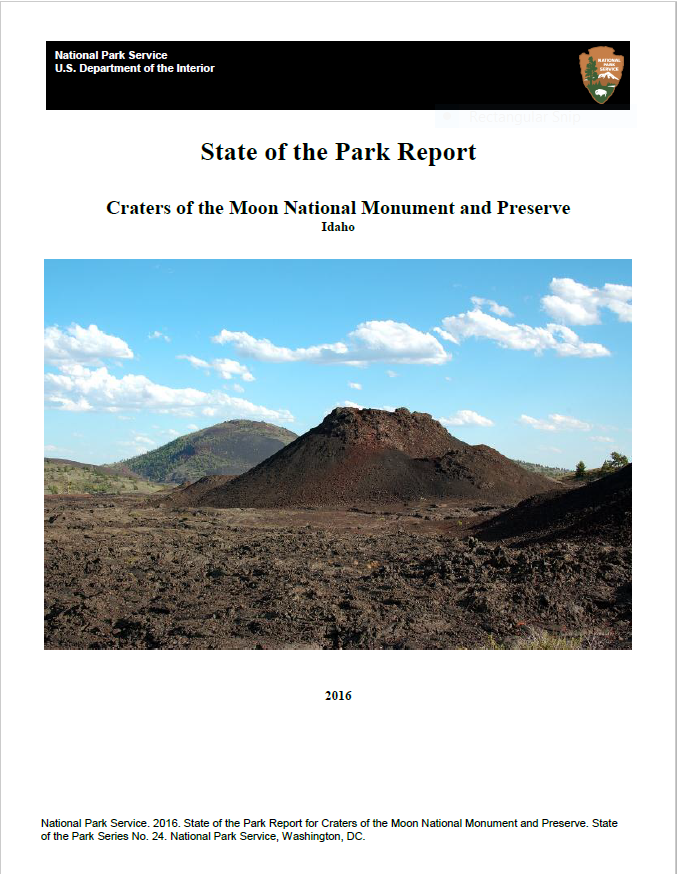
Although Craters of the Moon National Monument and Preserve receives high marks for its visitor experience, staffing and funding shortages could put areas within and outside the park’s core at risk, according to a “State of the Park” report issued recently.
The 69-page report details how more interpretive and educational programs, enhanced exhibits and signage, and improved accessibility has led to 99 percent satisfaction. Visitation to the rugged lava landscape of south-central Idaho has steadily increased, surpassing 200,000 in 2013. But the park doesn’t know how long those standards can be maintained without more maintenance, education and resource management staff.
“Due to the remoteness of the monument and preserve, volunteers are few. Combined with the shortage of staff, it is an all-hands-on-deck scenario whenever CRMO experiences an incident or hosts a special event,” the report says. “The lack of adequate funding and staffing for the park makes it difficult to care for all critical park resources.”
While the growth poses challenges near headquarters – the campground doesn’t have enough RV spaces and the 50-year-old wastewater system wasn’t built to handle the current number of visitors – concerns also exist in parts of the park that few visitors see.
In 2000, the Monument grew from 54,000 acres to 753,000 acres to protect the Great Rift volcanic rift zone and its associated features. The National Park Service manages 410,000 acres of the preserve, which it calls the “expansion area.” In all, about 95 percent of the park is designated wilderness or a wilderness study area.
“Current management is focused on the original monument area where most facilities and visitors are located,” the report says. “By comparison, the expansion area, which comprises 88 percent of NPS land, receives little attention.”
The sagebrush steppe ecosystems are threatened by non-native invasive species, particularly cheatgrass and Rush skeleton weed, as well as climate change impacts on species such as American pika and limber pine. In addition, declining populations of Brewer’s sparrow and the status of greater sage grouse were of concern.
This vast space in a remote area can be difficult to cover. Visiting Kings Bowl Lava Field, which has resource and safety issues, can take more than four hours round-trip from park headquarters. The report also says a permanent law enforcement officer is “a key position to be filled” to combat illegal cave entry, trespass livestock grazing, off-road vehicle use, vandalism, target-shooting at park signs, littering, garbage dumping and taking of park resources.
Despite these challenges, the only category of “significant concern” was “Cultural Landscapes,” due to a lack of documentation, inventory, data collection and monitoring. Many existing plans do not apply to the expansion area.
“A wide variety of cultural resources are found in the park; however, there is limited understanding of which are most significant. Analysis of these areas through inventory and assessment would enable the park to improve its management by identifying character-defining features and by recommending management actions to ensure these are preserved,” the report states.
The park made strides in addressing energy and water consumption. A 50-kilowatt solar array installed in 2011 produces about 40 percent of the electricity used by the park. In addition, water use was expected to decrease drastically in 2015 after patching a water system leak equal to 75 percent of the park’s total water use.
You can find the entire report online here.



Add comment